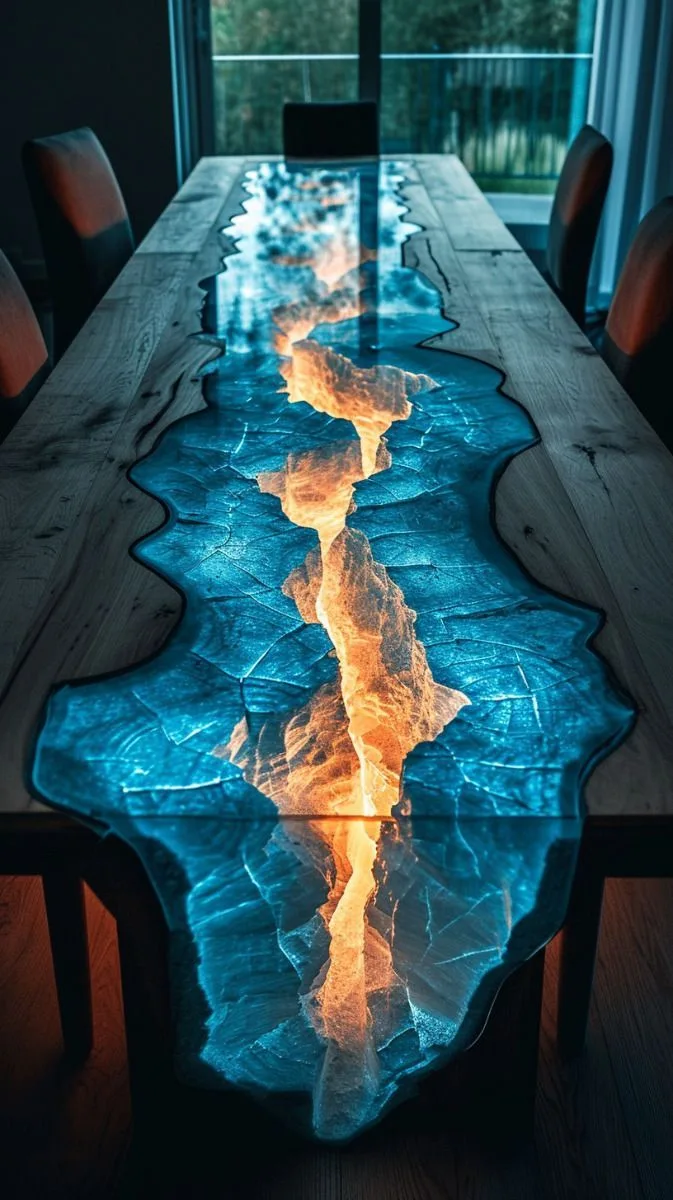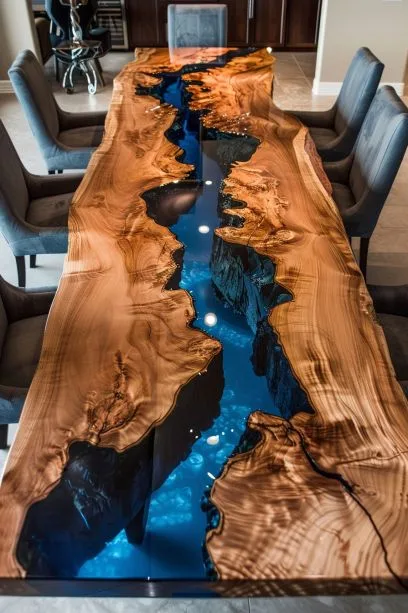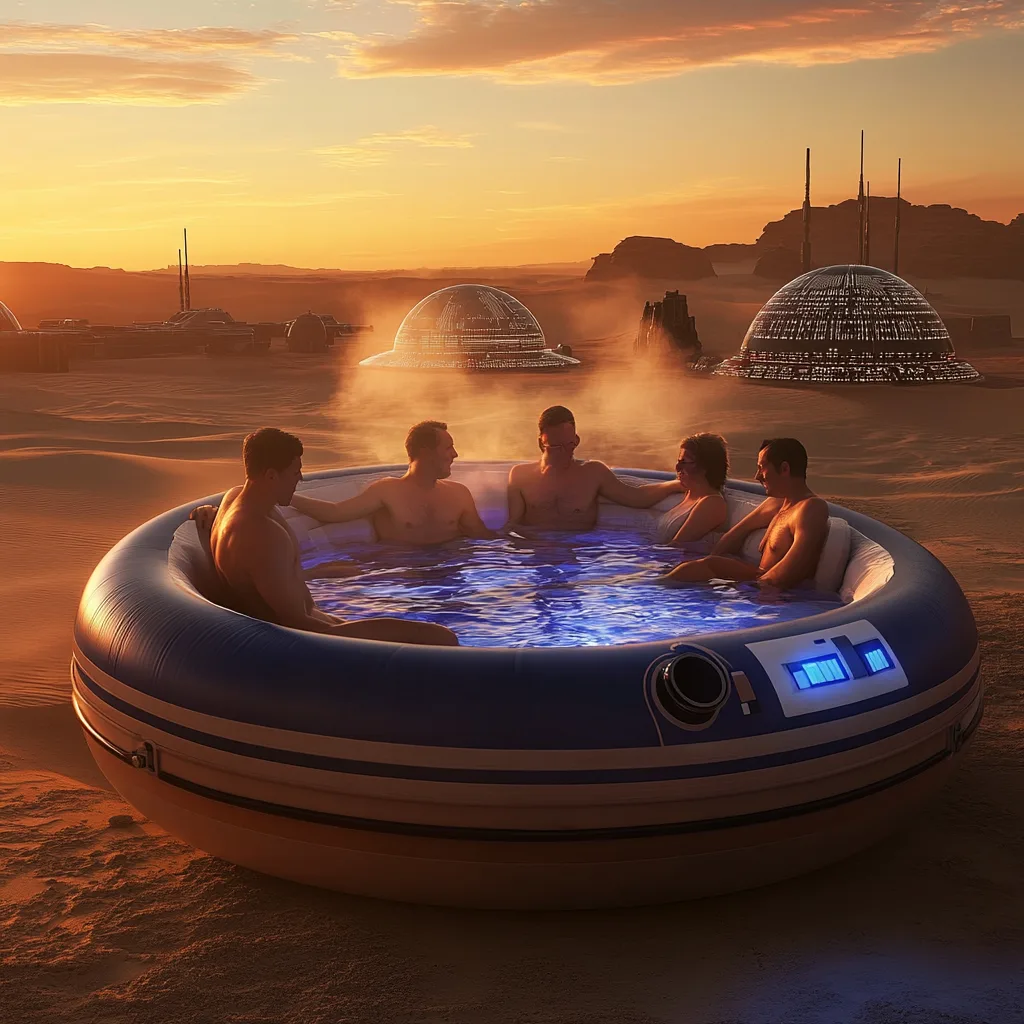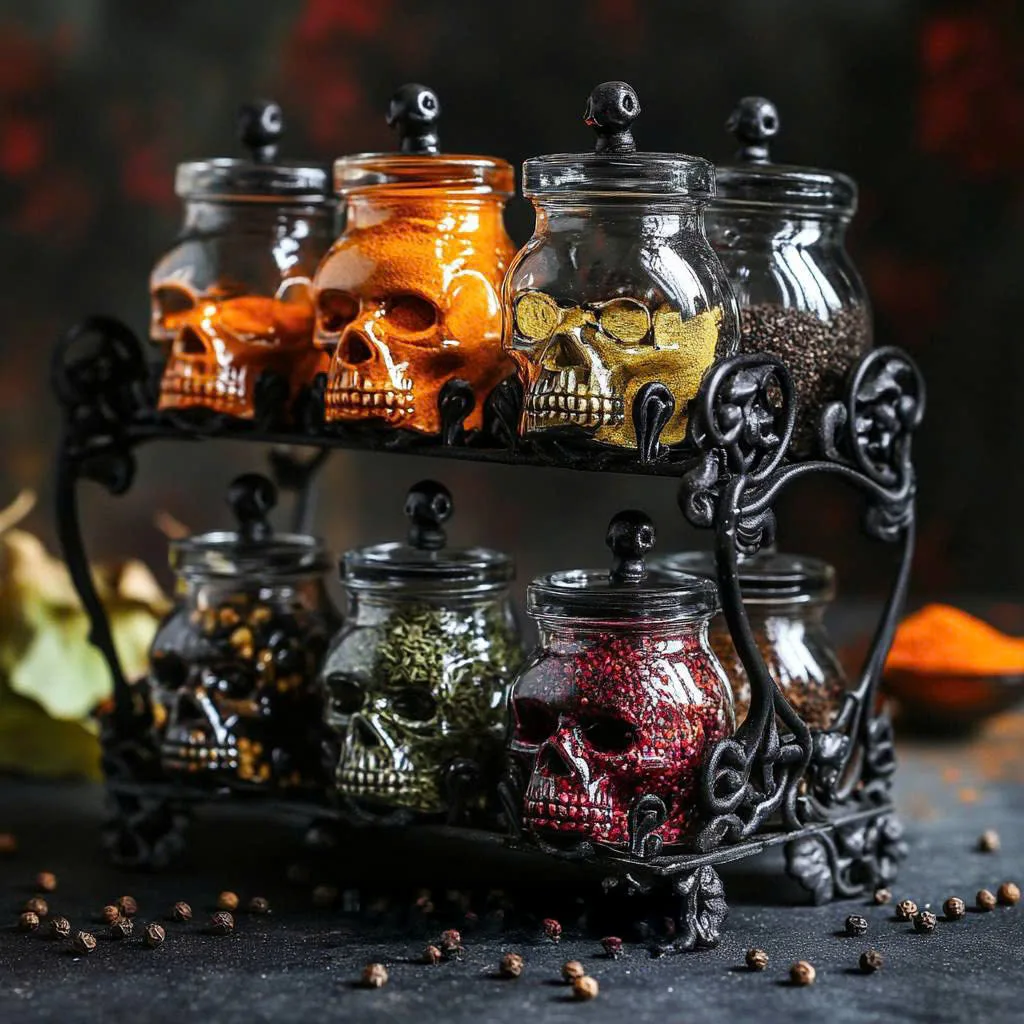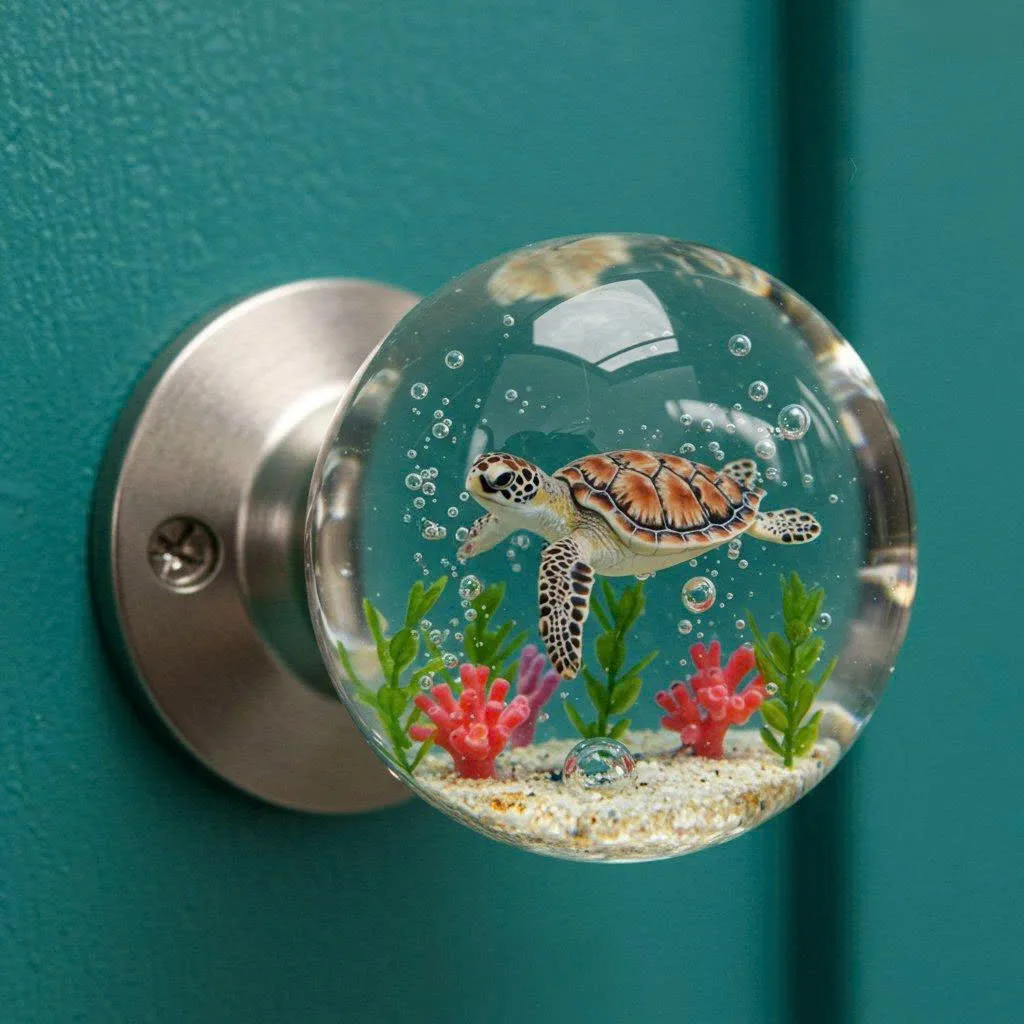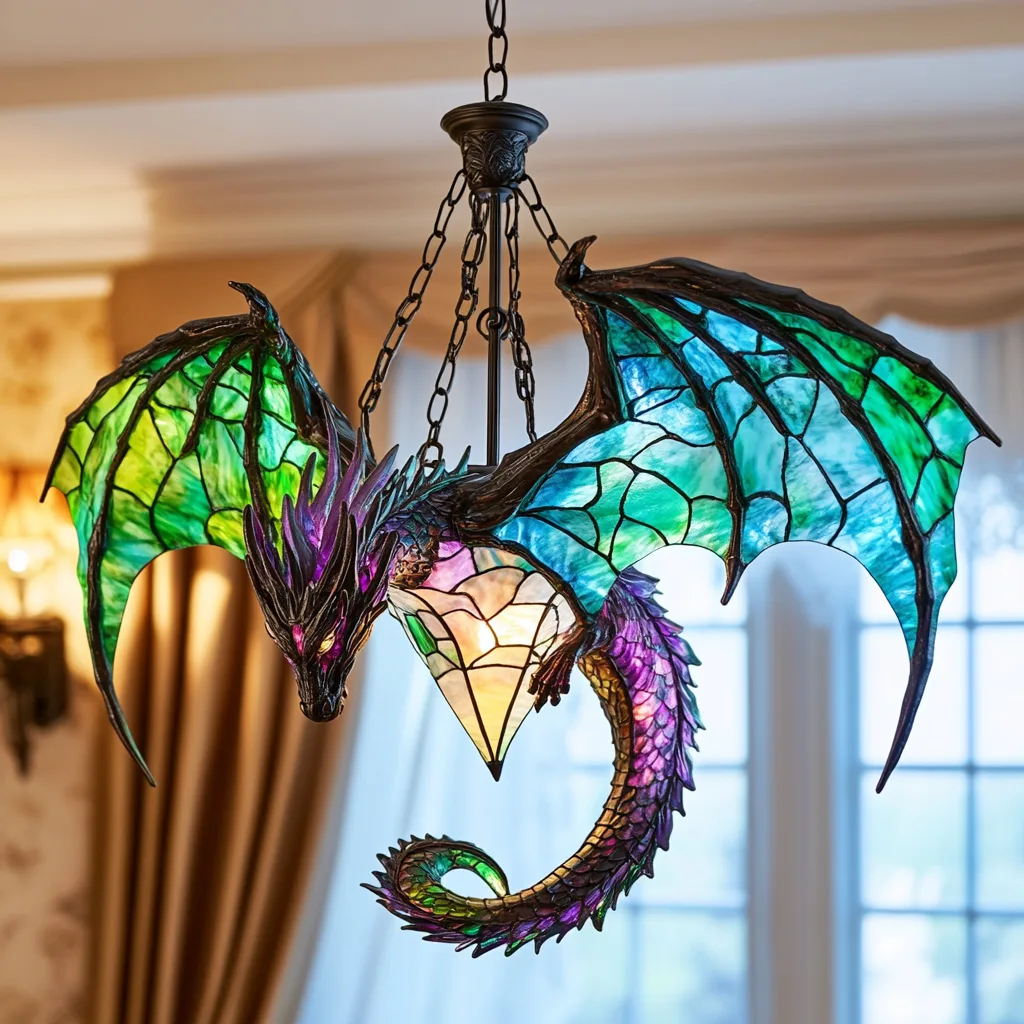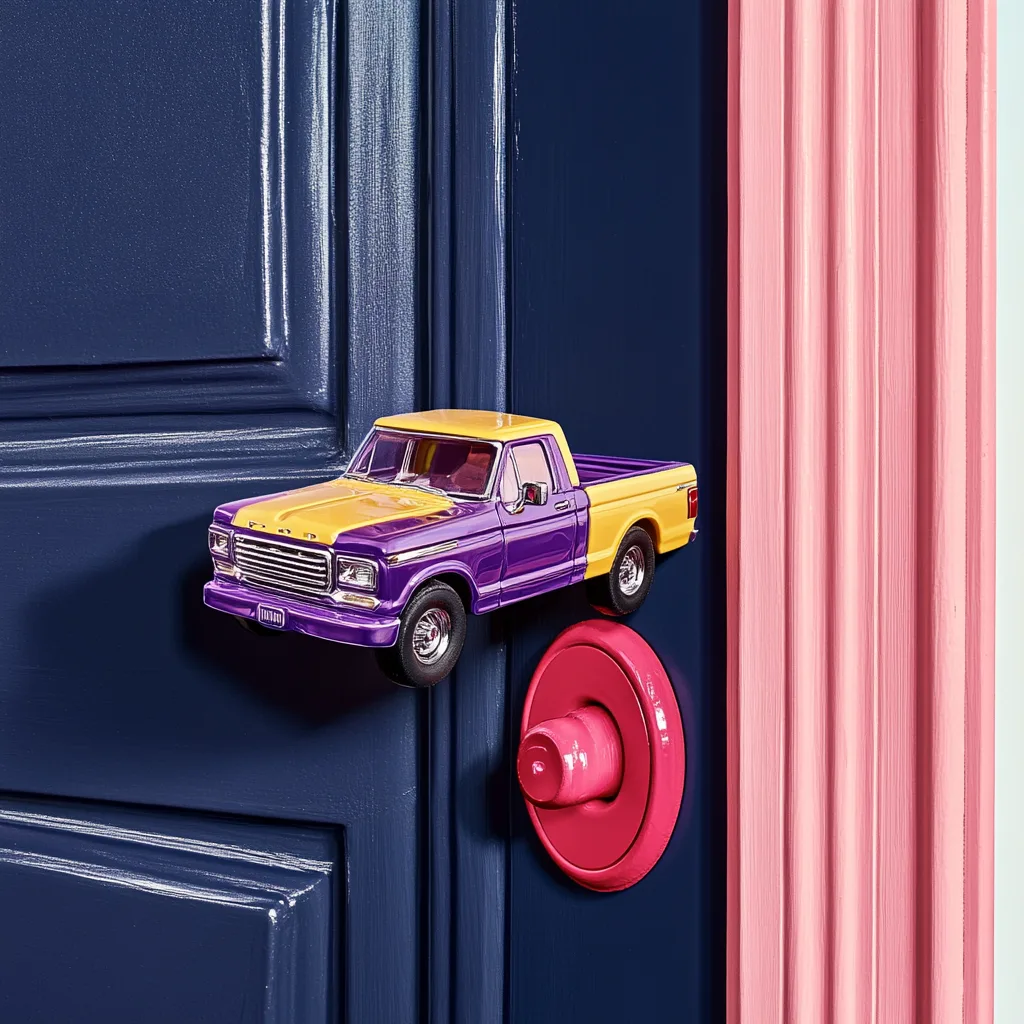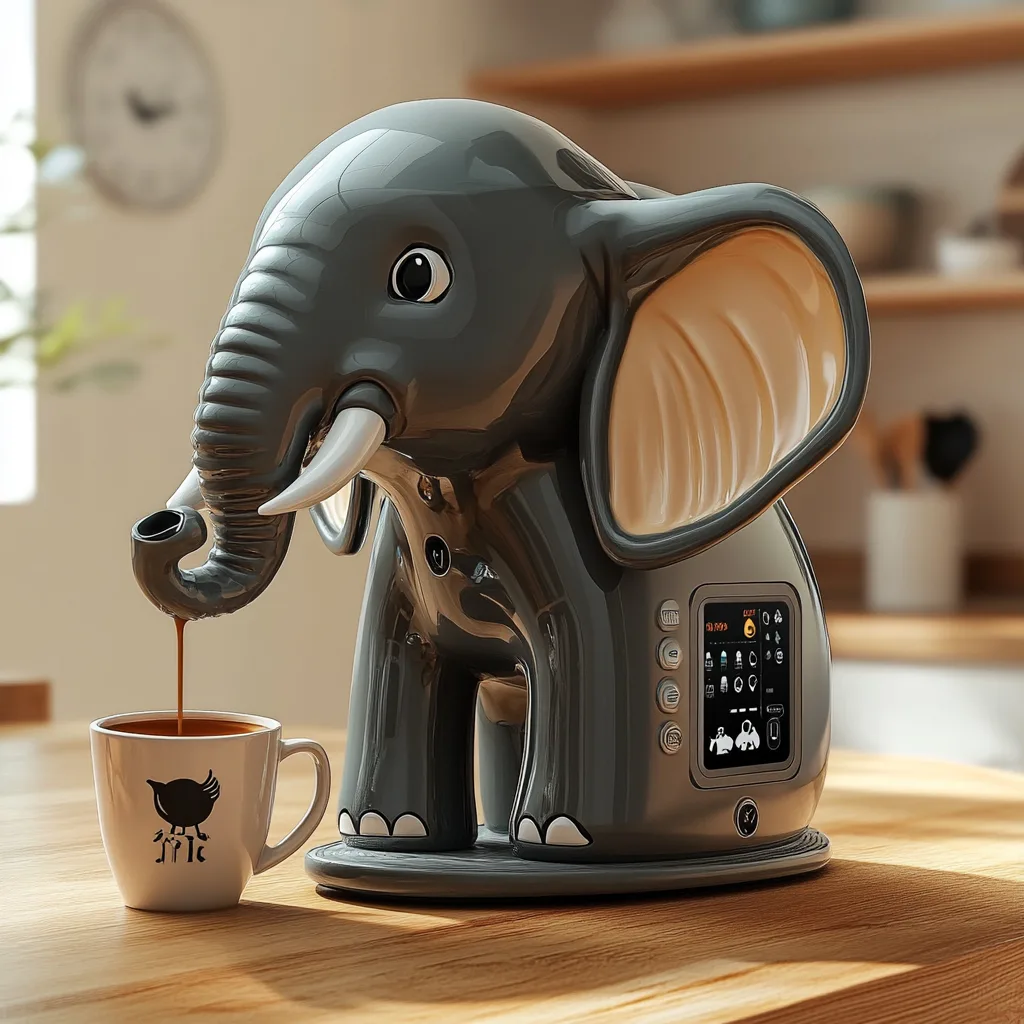Contents
- 1 The Elegance of Flowing River Dining Tables
- 2 The Art and Craftsmanship Behind Flowing River Dining Tables
- 3 Why Flowing River Dining Tables Are Gaining Popularity
- 4 How to Choose the Perfect Flowing River Dining Table
- 5 Caring for Your Flowing River Dining Table
- 6 Elevate Your Dining Space with a Flowing River Dining Table
The Elegance of Flowing River Dining Tables
In the world of interior design, furniture is more than just functional—it is an expression of style, personality, and artistic vision. One of the most breathtaking trends in modern furniture design is the flowing river dining table. These tables, crafted with a mesmerizing combination of wood and resin, create the illusion of a flowing river running through the center, making them not just dining tables, but statement pieces.
Flowing river dining tables are inspired by the beauty of nature, bringing the tranquility of water into home décor. The use of epoxy resin mimics the movement of a river, creating stunning, one-of-a-kind pieces. Whether placed in a home, restaurant, or office space, these tables transform any dining area into a place of artistic beauty and serenity.
This article explores everything you need to know about flowing river dining tables, from their materials and craftsmanship to their aesthetic impact and how to choose the perfect one for your space.
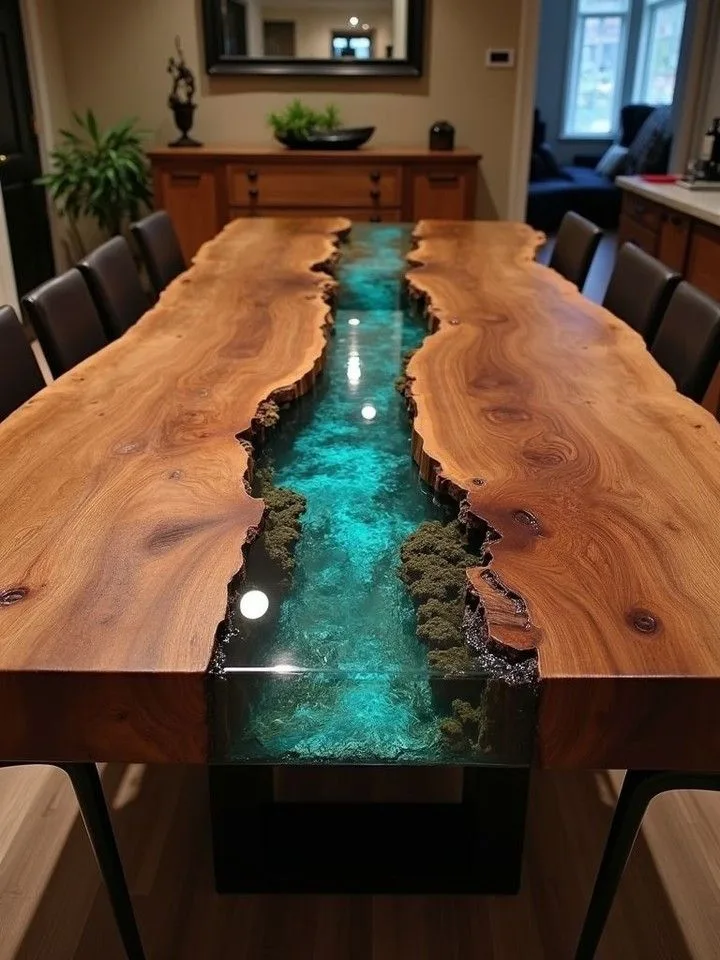
The Art and Craftsmanship Behind Flowing River Dining Tables
1. The Unique Design Concept
The defining feature of a flowing river dining table is the striking contrast between solid wood and the resin “river” running through its center. This design draws inspiration from natural landscapes, where rivers carve through forests and valleys. The transparent or tinted resin replicates water, giving the illusion of a flowing stream that divides the wood into two distinct sections.
Each flowing river dining table is unique because no two pieces of wood are the same. The natural grain, texture, and shape of the wood ensure that every table tells its own story, making it a true piece of functional art.
2. Materials Used in Flowing River Dining Tables
Crafting a flowing river dining table requires high-quality materials to ensure both beauty and durability. The two primary materials used are:
a) Wood Selection
- Live Edge Wood: Many river tables feature live edge slabs, preserving the natural contours of the wood. This creates an organic, raw beauty in the table’s design.
- Hardwoods: Oak, walnut, maple, and acacia are commonly used for their strength and rich grain patterns.
- Reclaimed Wood: Sustainable options include salvaged wood, which adds character and history to the table.
b) Epoxy Resin for the “River”
- Transparent Resin: Creates a crystal-clear water effect, enhancing the natural beauty of the wood.
- Colored Resin: Tinted blue, green, or other shades to resemble real rivers and lakes.
- Metallic Pigments: Used to add a shimmering effect, making the river appear more dynamic.
3. The Crafting Process
Creating a flowing river dining table is a meticulous and artistic process. Here are the key steps involved:
- Wood Selection and Preparation
- The wood is carefully chosen for its unique grain and durability.
- Live edge pieces are often used to create the natural riverbed effect.
- The slabs are cleaned, dried, and treated to prevent warping.
- River Channel Carving
- A section is carved out to form the riverbed, where the resin will be poured.
- The design may include bends, islands, or even waterfalls for added detail.
- Resin Pouring and Hardening
- The epoxy resin is mixed and tinted as needed.
- Multiple layers may be poured to achieve the desired depth.
- The resin is cured for several days to harden properly.
- Sanding and Finishing
- The entire table is sanded down for a smooth finish.
- A protective coating, such as polyurethane or oil, is applied to enhance durability and gloss.
- Table Base Selection
- Metal, wood, or acrylic bases are used to complement the design.
- Bases can be minimalist, industrial, or rustic, depending on the overall aesthetic.
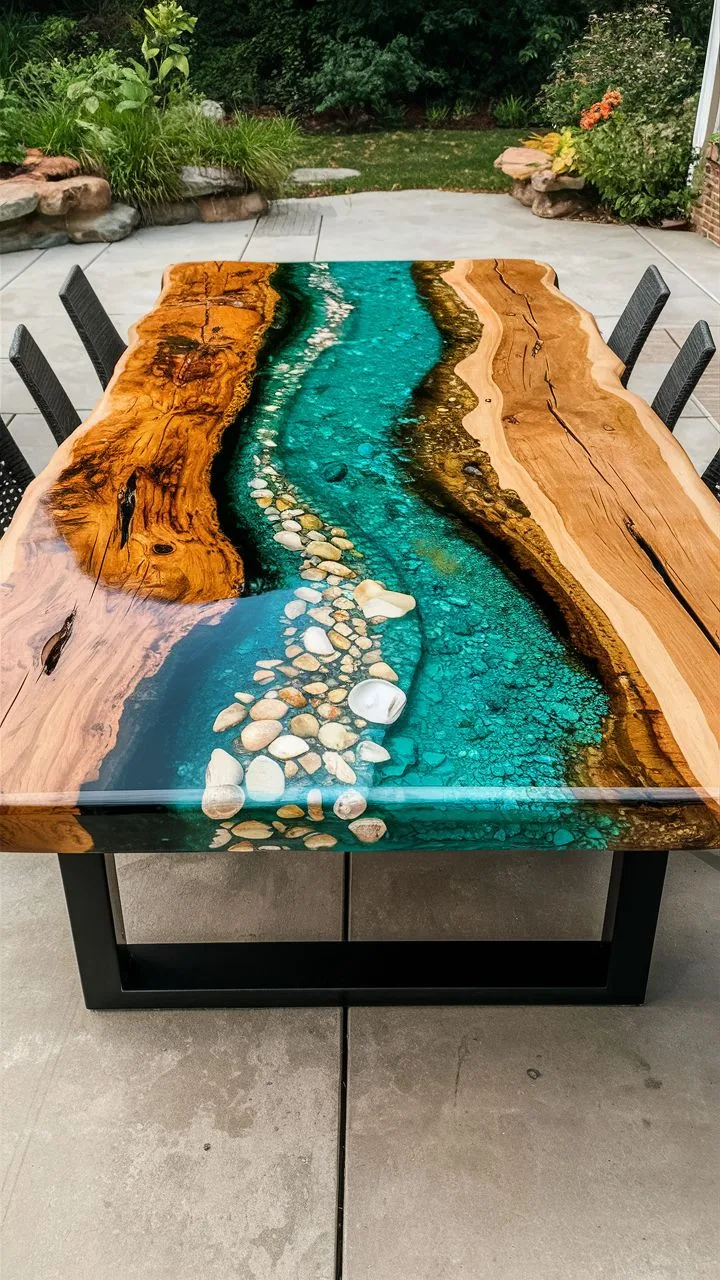
Why Flowing River Dining Tables Are Gaining Popularity
1. A Statement Piece for Any Dining Space
Unlike traditional dining tables, flowing river dining tables command attention. Their combination of wood and resin creates a visually striking effect, making them a centerpiece in any dining room. Whether placed in a modern home, a rustic cabin, or an upscale restaurant, they blend seamlessly with various décor styles.
2. The Harmony of Nature and Modern Design
One of the biggest appeals of flowing river dining tables is their ability to bring the beauty of nature indoors. The use of natural wood maintains a warm, organic feel, while the epoxy resin introduces a modern, artistic touch. This balance makes them versatile and appealing to a wide range of design aesthetics.
3. Customization and Personalization
Every flowing river dining table is unique, and customers can customize various aspects, including:
- Wood type and shape – Choose from different hardwoods and live edge designs.
- Resin color – Opt for clear, blue, green, or even glow-in-the-dark options.
- Table size – Customize the dimensions to fit your space.
- Leg design – Select from industrial metal legs, sleek acrylic bases, or traditional wooden frames.
4. Durability and Longevity
When made with high-quality materials, flowing river dining tables are built to last for generations.
- Hardwood construction ensures strength and resistance to wear.
- Epoxy resin is durable, waterproof, and resistant to scratches.
- Protective finishes keep the table looking new even after years of use.
5. Sustainable and Eco-Friendly Options
Many artisans use reclaimed wood and eco-friendly epoxy to create sustainable flowing river dining tables. This not only reduces environmental impact but also adds character to each piece.
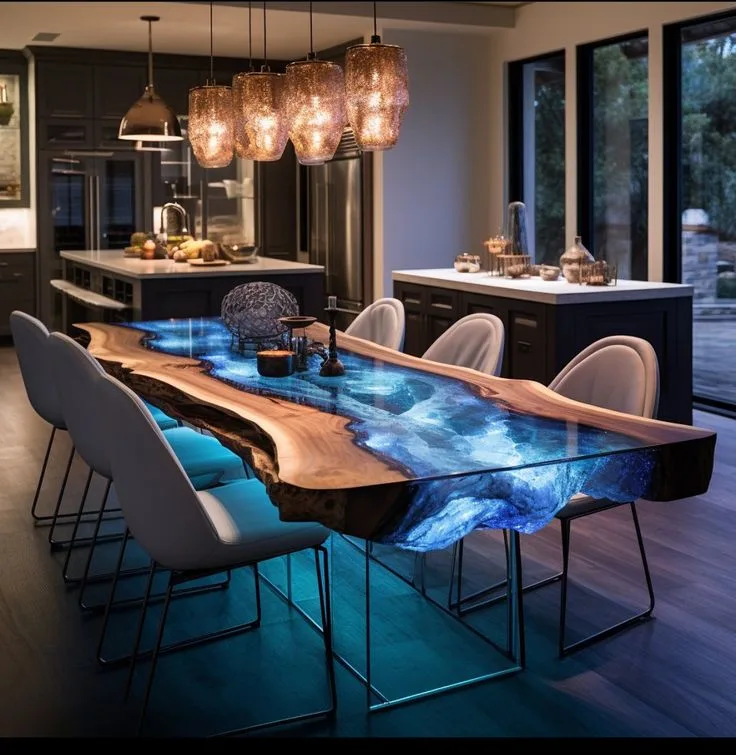
How to Choose the Perfect Flowing River Dining Table
1. Consider Your Space
- Measure your dining area to ensure the table fits comfortably.
- Choose a shape that complements your layout (rectangular, round, oval).
2. Choose the Right Wood and Resin Combination
- Dark woods like walnut create a bold, elegant look.
- Lighter woods like maple or oak offer a softer, more natural appeal.
- The resin should complement the existing décor and color scheme.
3. Select a Base That Matches Your Style
- Metal legs – Ideal for an industrial or modern look.
- Wooden bases – Perfect for rustic or farmhouse aesthetics.
- Acrylic legs – Create a floating effect for a contemporary vibe.
4. Decide on Additional Features
- Embedded LED lights for a glowing river effect.
- Engraved designs or personalized carvings.
- Glass tops for extra protection and easy maintenance.
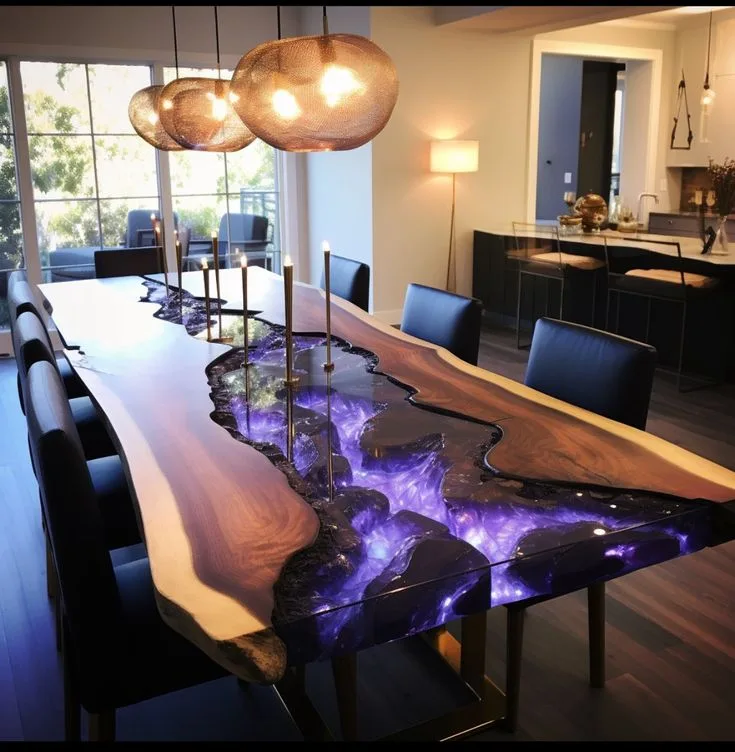
Caring for Your Flowing River Dining Table
To keep your flowing river dining table in pristine condition, follow these maintenance tips:
1. Regular Cleaning
- Wipe with a soft, damp cloth and mild soap.
- Avoid harsh chemicals that may damage the resin or wood finish.
2. Protecting the Surface
- Use coasters and placemats to prevent heat and scratches.
- Apply a protective sealant every few years to maintain shine.
3. Preventing Damage
- Keep away from direct sunlight to avoid discoloration.
- Use felt pads on the bottom of chairs to prevent scratches.
Elevate Your Dining Space with a Flowing River Dining Table
Flowing river dining tables are more than just furniture—they are a celebration of artistry, craftsmanship, and nature. Their stunning designs transform dining areas into sophisticated, elegant spaces while offering durability and practicality. Whether you choose a simple river design or a bold, illuminated masterpiece, these tables make every meal feel special.
If you’re looking to bring a unique and breathtaking piece into your home, a flowing river dining table is the perfect choice. Its seamless blend of organic wood and fluid resin captures the beauty of nature, creating a dining experience like no other.
